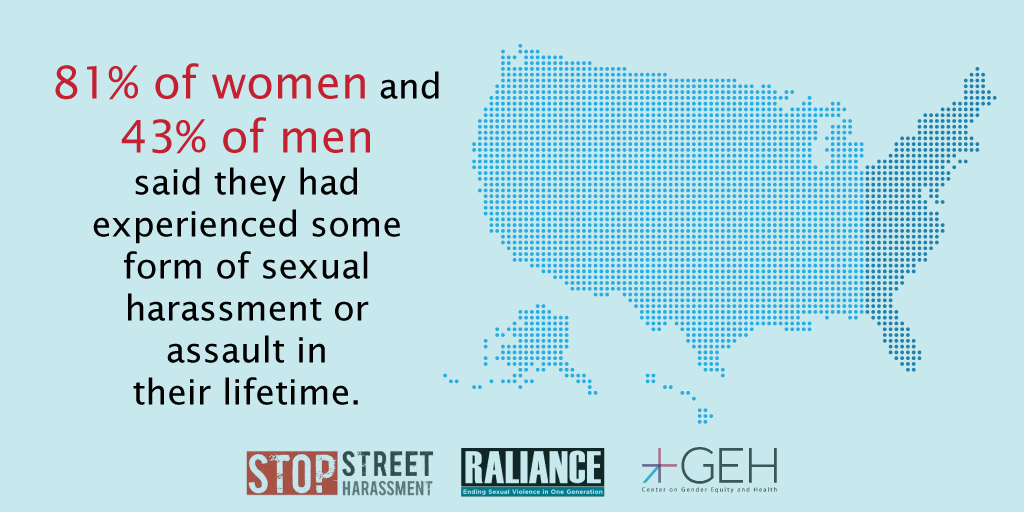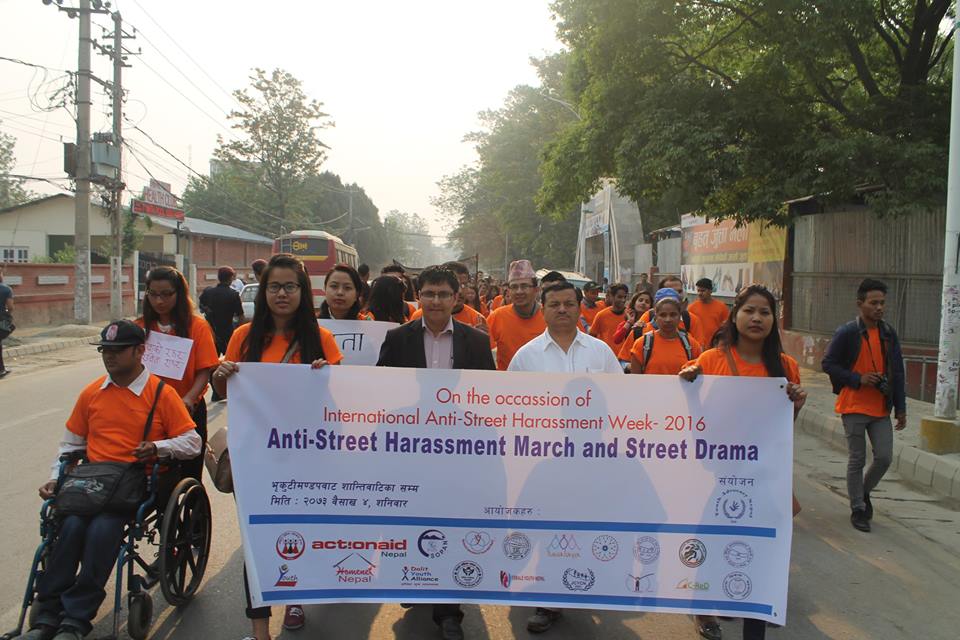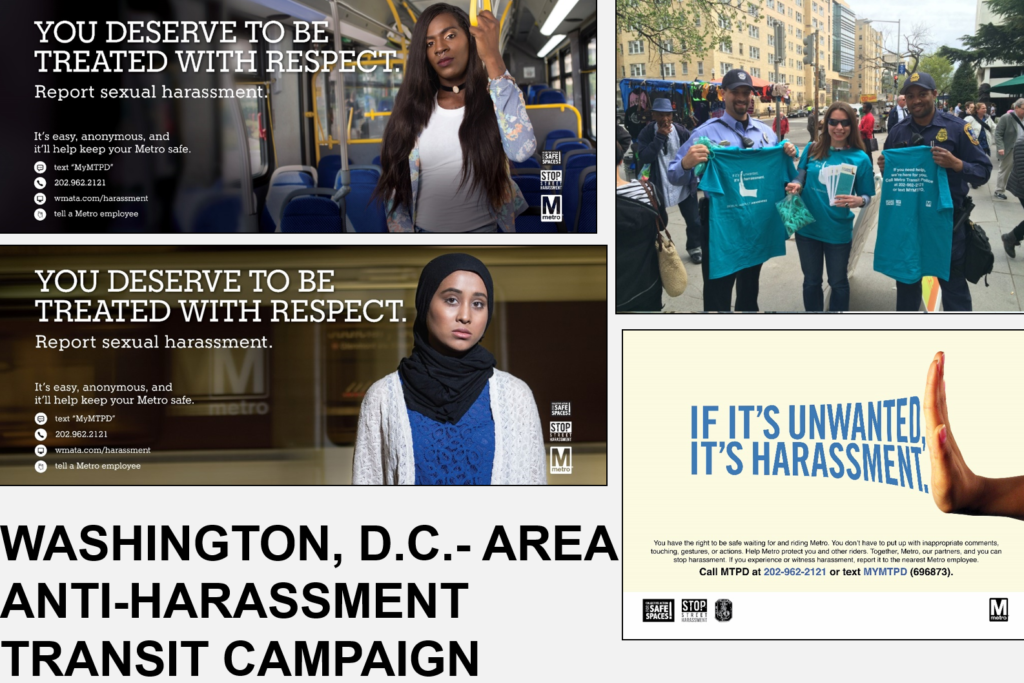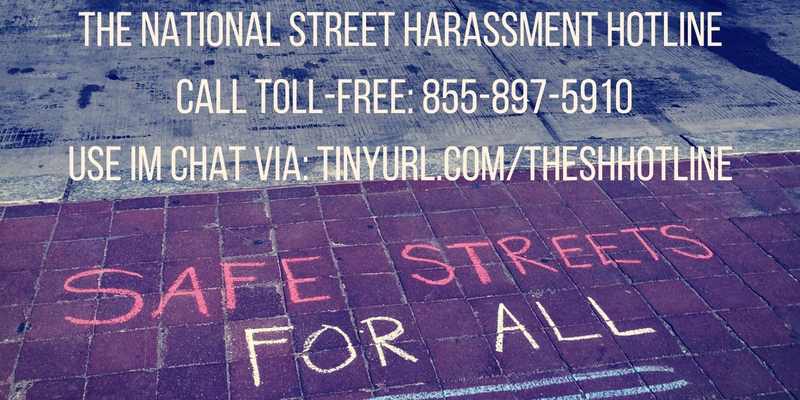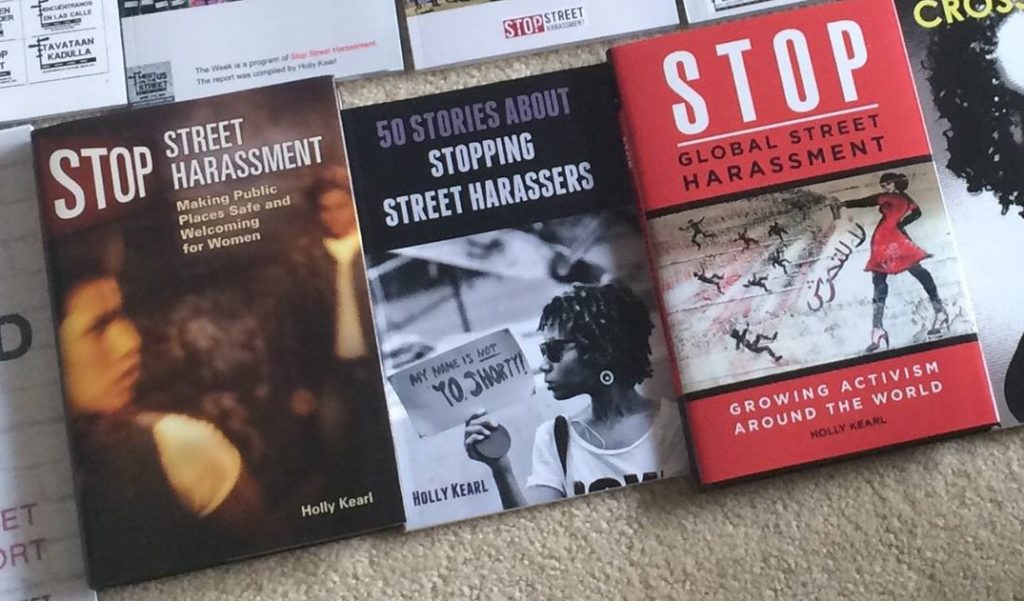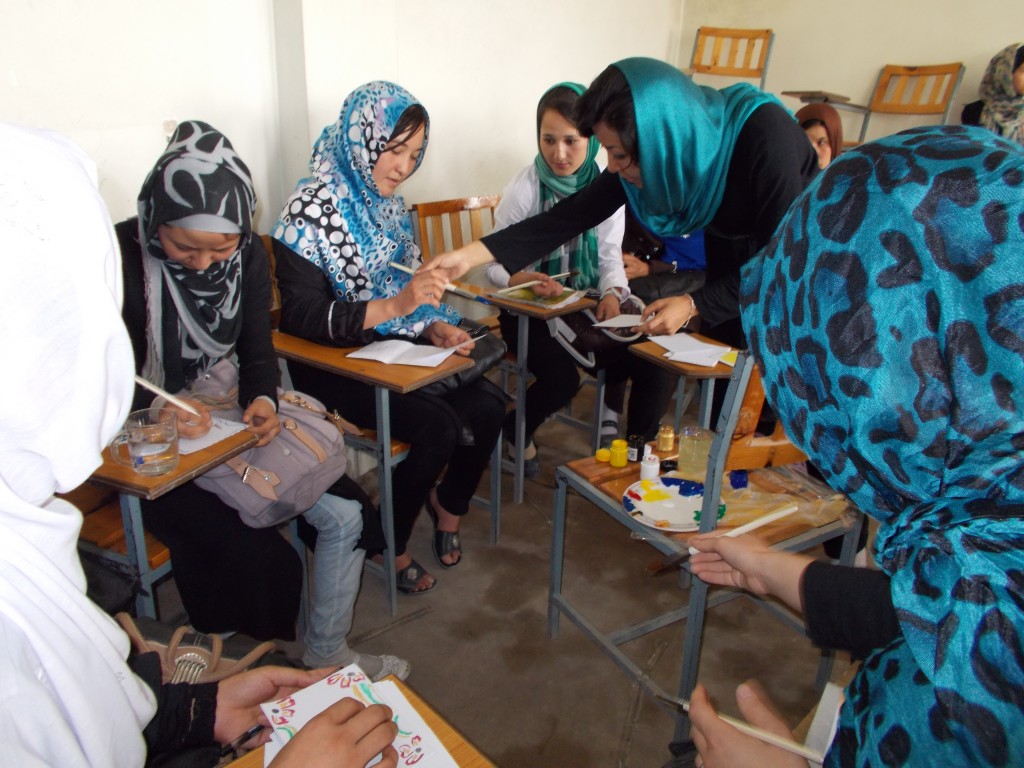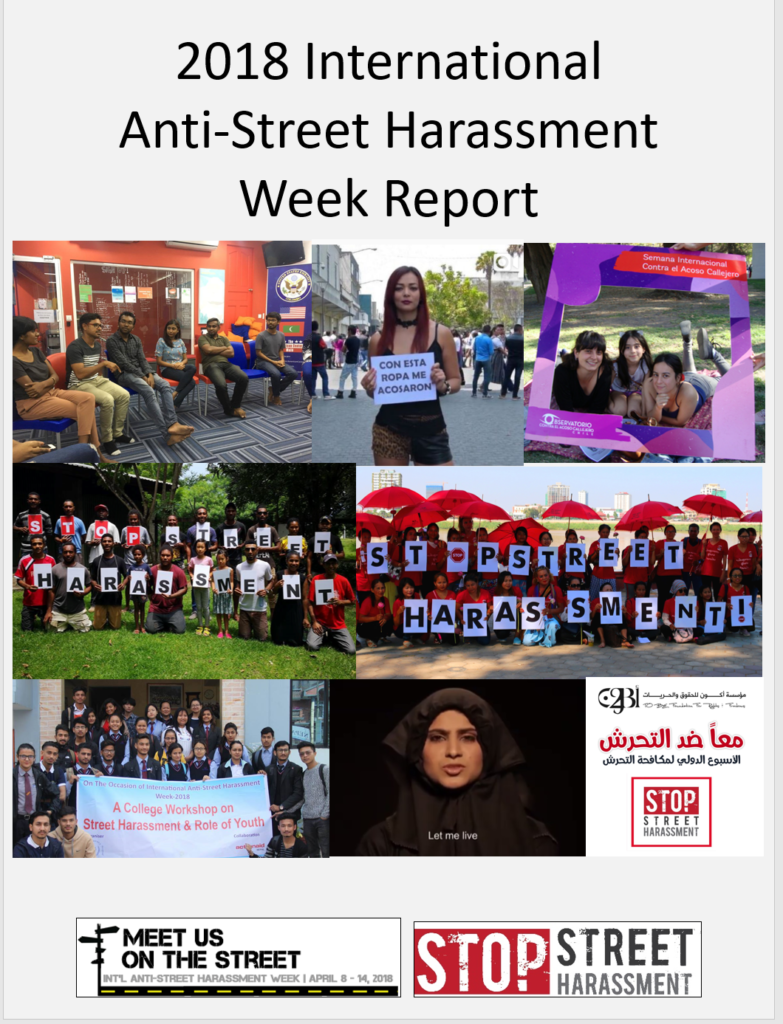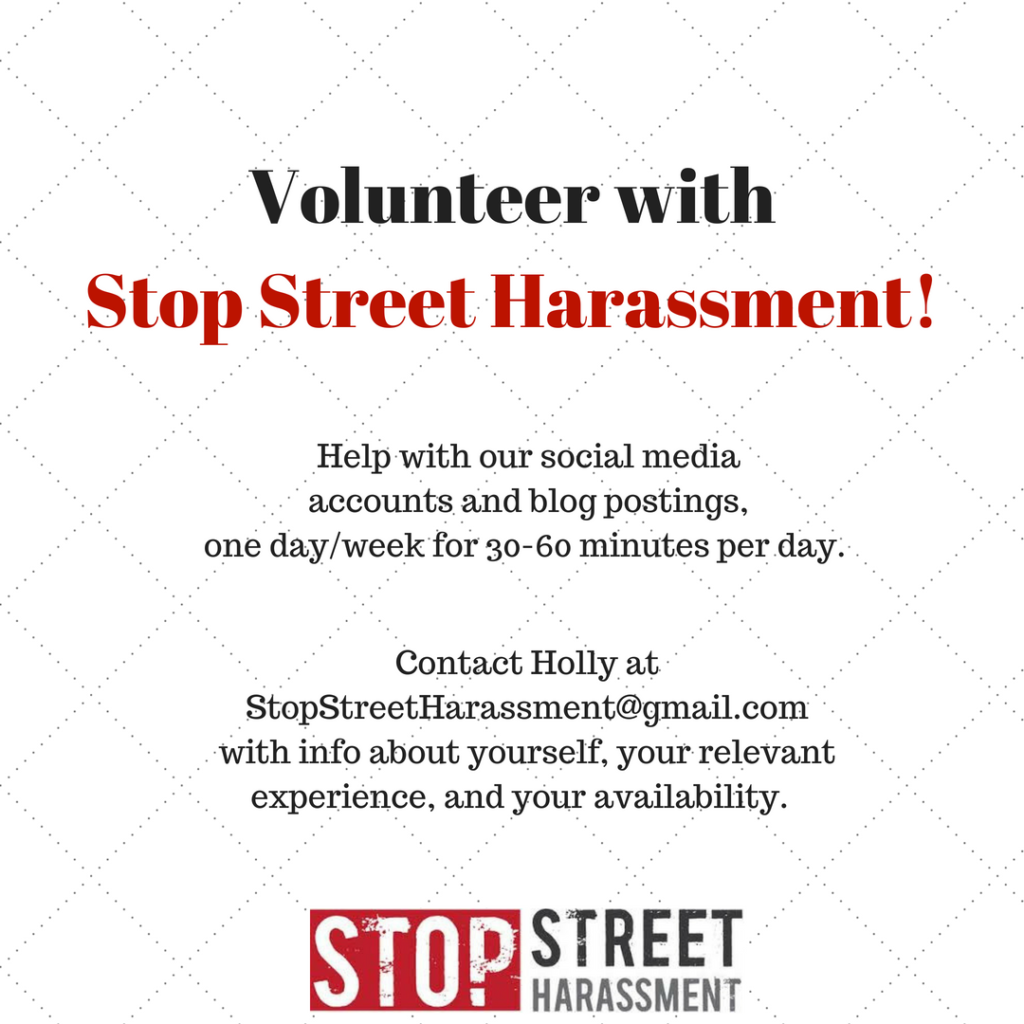 My first child was recently born and has some medical issues that will be requiring more of my time. As a result, I am looking for a few volunteers who can help with SSH’s social media pages and posting story submission on the blog. Ideally it’d be great to have a few volunteers who can manage a specific day of the week (e.g. Mondays) for the next few weeks, about 30-60 minutes per day, and who can work with minimal supervision from me after the initial on-boarding. Please reach out to me at StopStreetHarassment@Gmail.com if you’re interested and please share a little bit about yourself and your experiences with social media / WordPress, as well as your availability and geographic location. – Holly
My first child was recently born and has some medical issues that will be requiring more of my time. As a result, I am looking for a few volunteers who can help with SSH’s social media pages and posting story submission on the blog. Ideally it’d be great to have a few volunteers who can manage a specific day of the week (e.g. Mondays) for the next few weeks, about 30-60 minutes per day, and who can work with minimal supervision from me after the initial on-boarding. Please reach out to me at StopStreetHarassment@Gmail.com if you’re interested and please share a little bit about yourself and your experiences with social media / WordPress, as well as your availability and geographic location. – Holly
Archives for May 2018
SSH’s 10 Year Anniversary (Part 2)
Since it was founded 10 years ago, SSH has had a big impact locally in the Washington, DC-area, nationally in the U.S. and internationally! We are proud to have helped create a societal shift where street harassment is taken seriously by many, and there are global entities like the United Nations, national and city-level legislatures, researchers, academics, journalists, NGO advocacy groups, civil society organizations and community groups that address it.
 One way to measure SSH’s impact is to look at the number of news articles citing SSH’s research and work – and that number is more than 350. This includes articles at BBC, Guardian, USA Today, the Today Show, CNN, Wall Street Journal, PBS News Hour, New York Times, Washington Post, Los Angeles Times, Huffington Post, Marie Clare Magazine, Glamour Magazine, Shape Magazine, Health Magazine, Runner’s World Magazine, Ms. Magazine and New Moon Girls Magazine.
One way to measure SSH’s impact is to look at the number of news articles citing SSH’s research and work – and that number is more than 350. This includes articles at BBC, Guardian, USA Today, the Today Show, CNN, Wall Street Journal, PBS News Hour, New York Times, Washington Post, Los Angeles Times, Huffington Post, Marie Clare Magazine, Glamour Magazine, Shape Magazine, Health Magazine, Runner’s World Magazine, Ms. Magazine and New Moon Girls Magazine.
SSH’s 11 Biggest Achievements
In reflecting over the past 10 years, I decided to make a list of what I see as our biggest achievements. I aimed for 10 and came up with 11 that had to be on the list! 😊 Thank you so much to everyone who helped make them possible!
1. Running one of the go-to websites in the world for information about street harassment. It has been visited by at least 1.5 million people (the figure since we started tracking it seven years ago… this includes more than one million people in the past four years). Thousands of people from around the world have shared their street harassment stories on the website to bring attention to the problem, and there have been 13 cohorts of Blog Correspondents who wrote about street harassment issues and activism in their communities around the globe.
2. Commissioning and publishing in 2014 the first large-scale, nationally representative survey on street harassment that includes respondents of all genders. Our national study not only includes the findings from the 2,000-person survey but also the summaries of focus groups with various under-represented voices and ideas for how to stop street harassment based on interviews with various academic and community-based experts. The study has been used by countless entities and cited by every major U.S. news outlet.
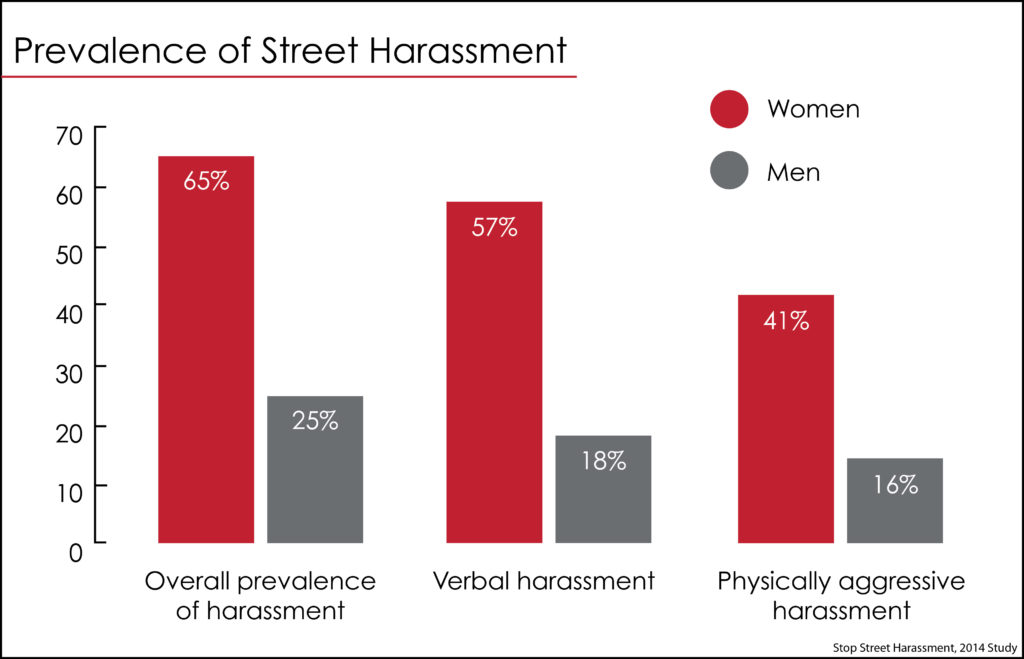 3. Commissioning and publishing in 2018 another nationally representative survey on all forms of sexual harassment and assault across all locations. The purpose was to bring forward the data behind the #MeToo stories and show that public spaces is where people experience sexual harassment the most. The New York Times requested the right to do an exclusive story on the findings the day it was released, and many other outlets covered it after that. The Centers for Disease Control and Prevention and UN Women have requested presentations on the findings in the coming months.
3. Commissioning and publishing in 2018 another nationally representative survey on all forms of sexual harassment and assault across all locations. The purpose was to bring forward the data behind the #MeToo stories and show that public spaces is where people experience sexual harassment the most. The New York Times requested the right to do an exclusive story on the findings the day it was released, and many other outlets covered it after that. The Centers for Disease Control and Prevention and UN Women have requested presentations on the findings in the coming months.
4. Starting International Anti-Street Harassment Week to provide space for groups and people all over the world to speak out against street harassment in their communities at the same time, and then overseeing eight of these weeks. Groups in up to 40 countries routinely participate, engaging tens of thousands of people in total each year.
5. Collaborating with Collective Action for Safe Spaces and the Washington Metropolitan Area Transit Authority on a widescale and comprehensive anti-sexual harassment transit campaign since 2011. It’s entailed: training frontline staff, three waves of print PSAs and one wave of audio PSAs, two representative surveys of riders, and annual outreach/flyering days at various Metro stations. Millions of riders have been exposed to the campaign.
6. Founding the first-ever National Street Harassment Hotline in 2016, which is run in collaboration with the Rape, Abuse & Incest National Network and offers 24/7 free support by phone or secure IM chat, in English and Spanish. It serves an average of 30 people per month.
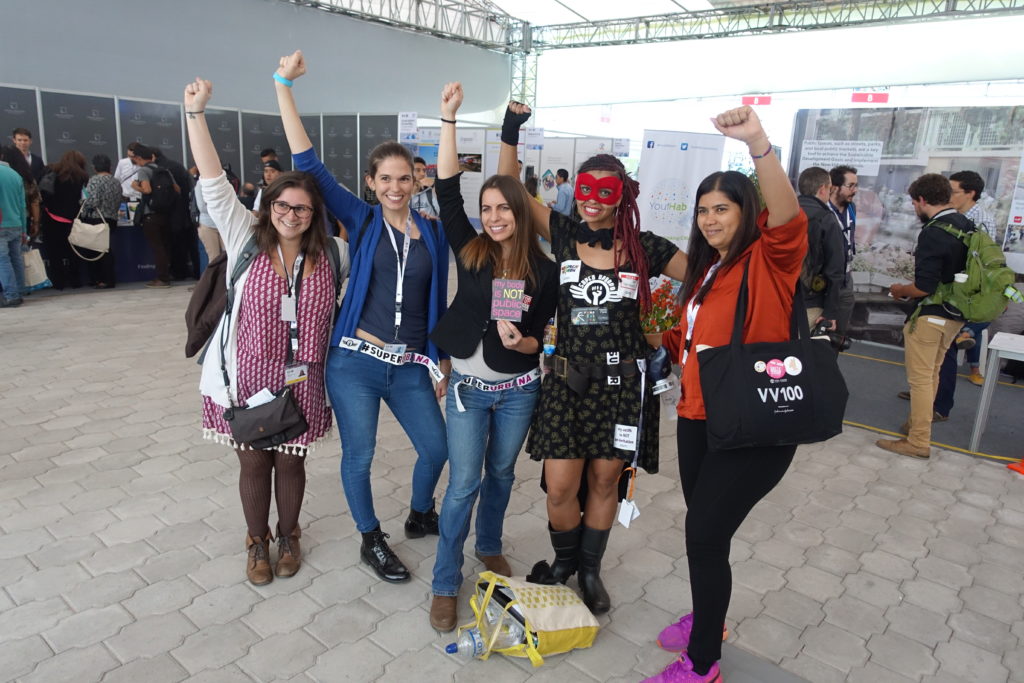
7. Speaking at and participating in 150+ important conferences, rallies, and events, including:
- UN convenings on sexual violence in India (x2), Turkey, Ecuador and Mexico as well as multiple UN Commission on the Status of Women events in New York City;
- An International Women’s Day March with UN Women in New York City;
- Several Slutwalk rallies in Washington, DC;
- National Sexual Assault Conference, National Women’s Studies Association Conference, International Coalition Against Street Harassment Conference, and NOW’s annual conference.
- City Council Hearings on street harassment in New York City, Philadelphia and Washington, D.C.
- Workshops and lectures at more than 40 university/college campuses, including NYU, Stanford, University of California at Berkeley, University of California at Irvine, University of Illinois Urbana-Champaign, University of Iowa, University of Nebraska, University of Nebraska, University of Wisconsin-Green Bay, Portland State University, Georgetown University, George Washington University, George Mason University, Santa Clara University and more.
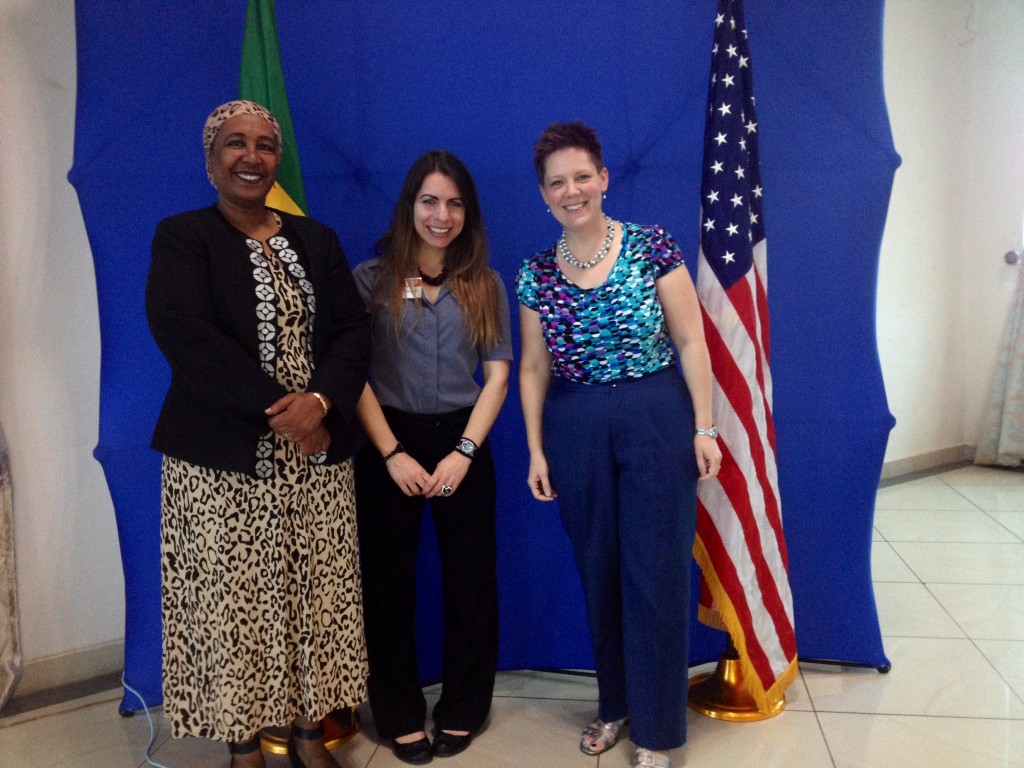
8. Advising entities like Google, Lyft, Runner’s World, U.S. Department of State, New York City Council and lawmakers in the U.S. and internationally on their efforts to address street harassment and related issues. Notably, New Jersey passed a law against upskirt photos thanks to initial consultation with SSH early in the legislative process.
9. Producing four publications that are regularly read, cited and have had an impact, including:
- Two academic books: Stop Street Harassment: Making Public Places Safe and Welcoming for Women (available in paperback for $13.50), and Stop Global Street Harassment: Growing Activism Around the World (available in hardcover for $37 and $35 for ebook).
- A collection of empowering responses to harassment in 50 Stories about Stopping Street Harassers. (Available in paperback for $10, Kindle for $6.99).
- A state-by-state legal guide called Know Your Rights: Street Harassment and the Law (Download the free toolkit (PDF) or access the companion web feature).
10. Mentoring 14 groups around the world on their anti-street harassment projects through the Safe Public Spaces Mentoring Program. It started as a PILOT in 2013 when we worked with the leaders of projects in Afghanistan, Cameroon and Chicago, USA. In 2014, we worked with six teams in India, Kenya, Nepal, Nicaragua, Serbia, and the USA. In 2015, we worked with four teams in France, India, Romania, and the USA.
11. Leading or collaborating on campaigns against companies that trivialize street harassment. The campaigns entail pressuring companies to drop harmful ads and change offensive language. One example is a campaign against a construction company in New Jersey that had a billboard suggesting street harassment is a compliment – a petition led to the company to immediately remove it.

What will our next 10 years bring?
SSH’s 10 Year Anniversary (Part 1)
This month marks the 10-year anniversary of Stop Street Harassment! I am so grateful to the thousands of people who have shared their stories on the blog; participated in International Anti-Street Harassment Week; served as Blog Correspondents, social media volunteers, interns and board members; donated to fund our programs; attended SSH talks; read our articles and publications; signed our petitions; and more. With the help of our community, we have achieved a lot in 10 years, particularly considering we are a small organization run by volunteers who all have other jobs.
To commemorate this big 10-year milestone, here is a history of how we came to be, followed by a list of 11 of our biggest achievements!
History of Stop Street Harassment
During the fall of 2006 and spring/summer of 2007, I researched and wrote my master’s thesis on gender-based street harassment while attending George Washington University in Washington, DC. I focused on how, in lieu of social recognition of the problem, women were using websites like the Street Harassment Project and Hollaback! chapter sites to share personal stories and strategies for dealing with street harassment. I conducted a small survey as part of my research. After I turned in my thesis, I put the survey results online – and reporters started finding it. At the time, there was so little accessible research on this topic that my thesis research was newsworthy.
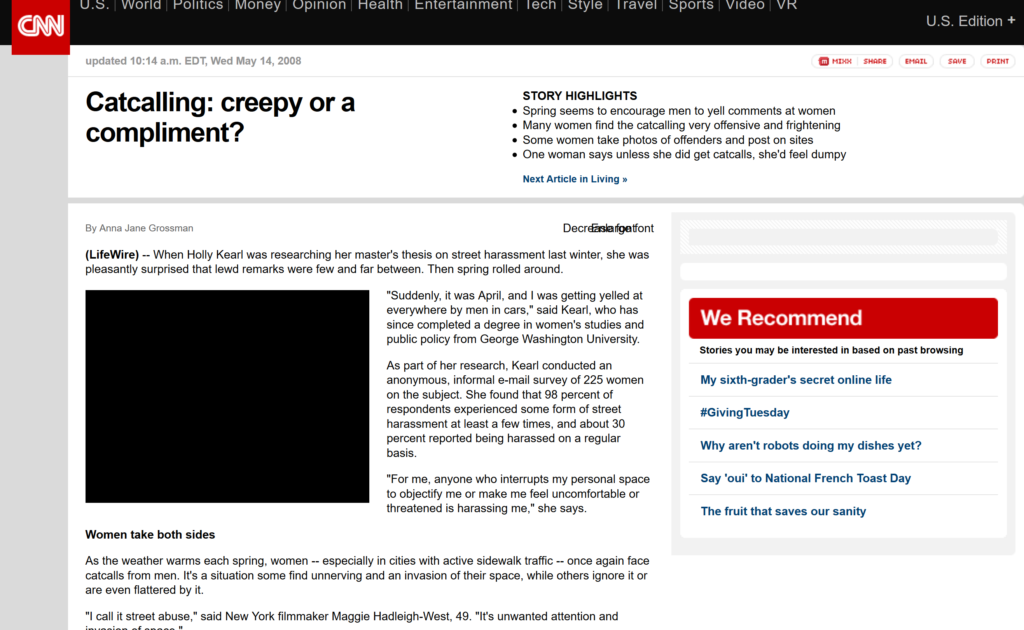 The most influential article that cited my thesis was one on CNN.com in May 2008. At that time, it was commonplace for people to view street harassment as a compliment, a minor annoyance, no big deal or the fault of the person being harassed. The title of the CNN article reflects this reality: “Catcalling: creepy or a compliment?” Really, though, the title should have read something like, “Catcalling: A form of street harassment that must end.”
The most influential article that cited my thesis was one on CNN.com in May 2008. At that time, it was commonplace for people to view street harassment as a compliment, a minor annoyance, no big deal or the fault of the person being harassed. The title of the CNN article reflects this reality: “Catcalling: creepy or a compliment?” Really, though, the title should have read something like, “Catcalling: A form of street harassment that must end.”
The article inspired dozens of blog posts and articles, hundreds of comments to the CNN article and many emails that I personally received that showed: 1) how common street harassment is and 2) how many misconceptions there are about the problem.
I was working full-time and I had no intention of becoming an anti-street harassment activist, but the response to the article demonstrated a clear need for public education on the topic. This need became more urgent once I went back to the websites I had analyzed for my thesis and found that the two websites I liked the best were either gone or inactive. Plus, at the time, unless you lived in one of the few cities with Hollaback! chapter sites, you didn’t have a place to publicly share your street harassment story. My domestic partner suggested I start my own website where I could share the resources I had collected through my thesis research. I also could provide space for story-sharing from people located anywhere in the world. I decided to do it.
In May 2008, Stop Street Harassment was born.
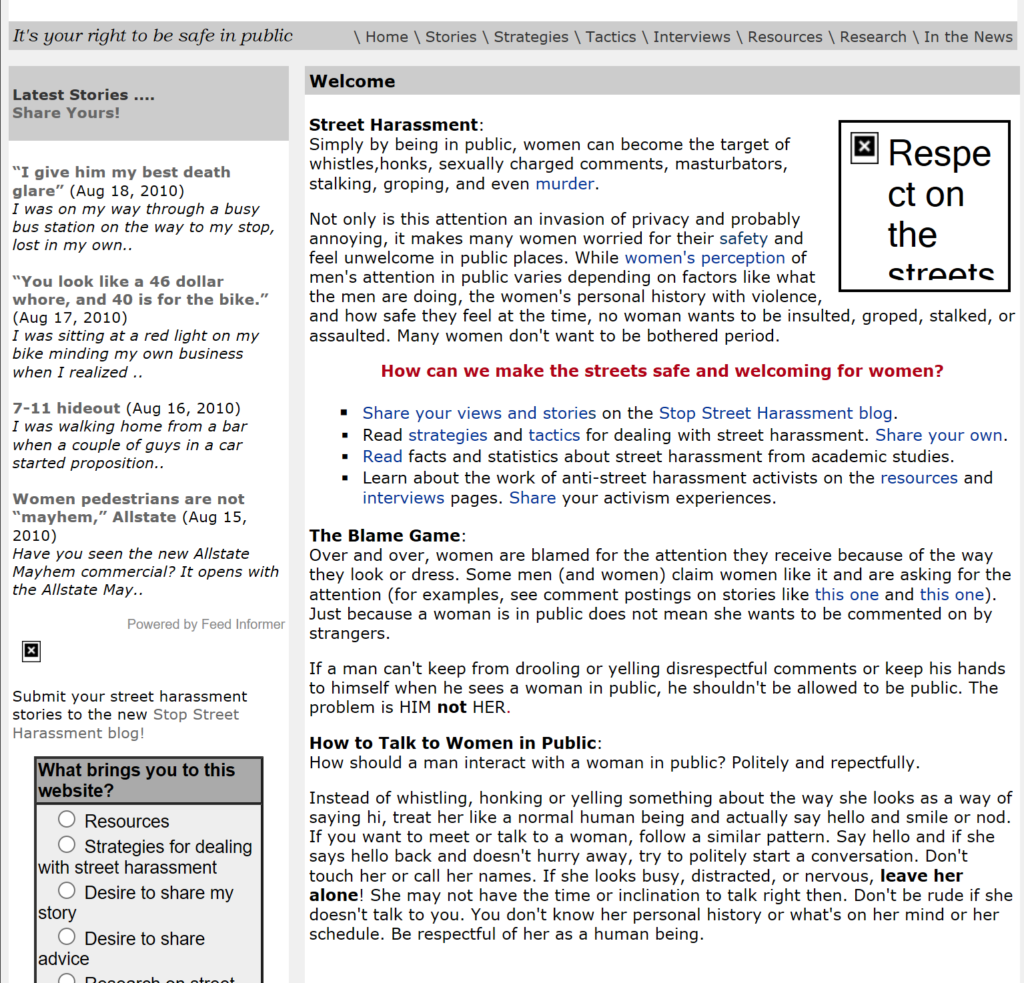 SSH began as a website that listed resources about street harassment and there was a companion blog where people could share their stories (I combined the website and blog during a 2011 website redesign). After a few months, I also began to write blog posts tracking relevant news and initiatives globally. I regularly searched online for new initiatives and conducted interviews with the people running them (after a few years, there were so many of these efforts that I could no longer keep up with them!).
SSH began as a website that listed resources about street harassment and there was a companion blog where people could share their stories (I combined the website and blog during a 2011 website redesign). After a few months, I also began to write blog posts tracking relevant news and initiatives globally. I regularly searched online for new initiatives and conducted interviews with the people running them (after a few years, there were so many of these efforts that I could no longer keep up with them!).
In the years since, SSH’s work has expanded to include various public education components, community mobilization programs and direct services. Our projects usually have come about because I’ve seen a gap that needs to be filled and decide to fill it, be that by commissioning a nationally representative survey to collect data PROVING street harassment is a problem, founding a national hotline to provide emotional support for people facing street harassment, or organizing space for groups all over the world to join forces on an annual basis to speak out against street harassment together. SSH also does a lot of idea-sharing of what’s working in various parts of the world and makes introductions between activists when relevant.
One of my big goals in the early years of SSH was to document the problem, which we’ve done. Another was to help change the societal acceptance of street harassment as being inevitable, a compliment or the fault of the harassed person (e.g. see the CNN article title!). We’ve made a lot of progress there, too. While there are some people who still spew views that minimize and dismiss the harms of street harassment, there are fewer of them. Further, it is much less common for journalists, government officials and others who have a public voice to frame it this way. For instance, in 2011, the Washington Metropolitan Area Transit Authority publicly said regarding sexual harassment on the transit system: “One person’s harassment is another person’s flirting.” Now they are one of the transit systems doing the most in the world to address and prevent sexual harassment.
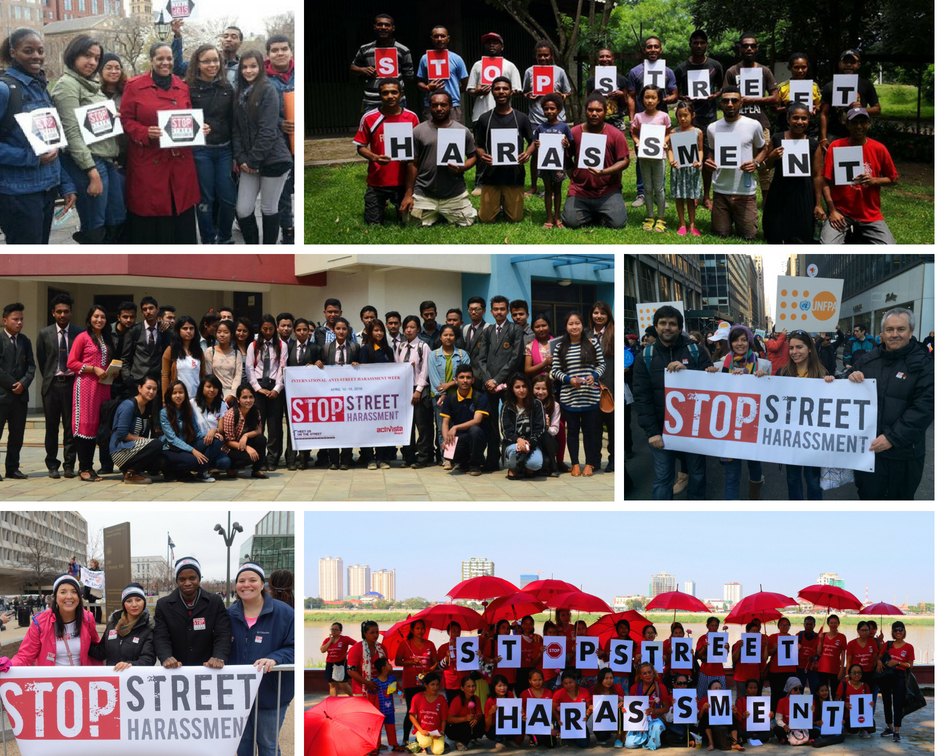 There is still a lot of work left to do, but I feel pleased with what has changed in 10 years.
There is still a lot of work left to do, but I feel pleased with what has changed in 10 years.
Thank you to everyone who has supported SSH and has helped create a societal shift where street harassment is taken more seriously and addressed. Hopefully one day harassing strangers in public spaces will be completely socially unacceptable and then people of all genders and backgrounds can safely enjoy and utilize public spaces.
While much of our work is done pro bono, we are grateful to our donors who have made initiatives like our national studies and the hotline possible. You too can make a tax-deductible donation to keep our work going.
Read about 11 of our biggest achievements since May 2008!
2018 Anti-Street Harassment Week Report!
Thank you for joining us in 2018 for International Anti-Street Harassment Week, from April 8-14!
Here’s the wrap-up report featuring actions from 38 countries and 13 U.S. states. Here is the photo album from the week!
USA: Street Harassment on a College Campus, One Year Later
Connie DiSanto, USA SSH Blog Correspondent
It was just over a year ago when I connected with Stop Street Harassment’s founder Holly Kearl over a controversial exhibit I created with a student here a UNH. I remember when I first ran the idea by a staff member who works at the exhibit location, his comment to me on the subject matter of street harassment, was “I thought that cat call stuff went out with the 80s?”
And during a residential hall program that our staff was offering to a group of students, the RA for the hall was informed that the program was going to be about street harassment and then replied, “Does that really happen here at UNH? I always thought it was just something in big cities.”
Those comments are more reasons why we still need to talk about street harassment, and specifically, we need to talk about it on college campuses. As part of last year’s exhibit, a survey was conducted by our student volunteers and it concluded that statistically speaking, what happens on this campus is very similar to what happens nationally with regard to street harassment.
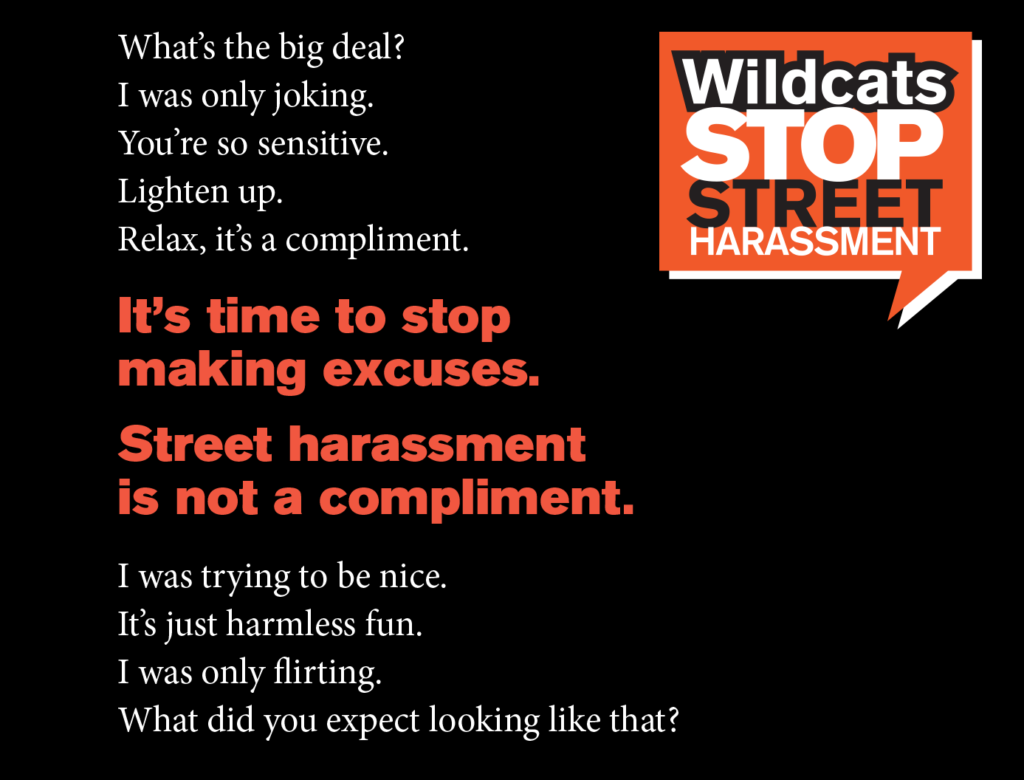 As we end the final semester for the year we realize there is much more work to be done. We know that even our students struggle with identifying what street harassment is and what it looks like on their own campus. We’ve heard from many students who recall sexually harassing comments made to them at a very early age yet when applying it to situations that happen within their community they begin to expect it on a college campus as part of the college culture.
As we end the final semester for the year we realize there is much more work to be done. We know that even our students struggle with identifying what street harassment is and what it looks like on their own campus. We’ve heard from many students who recall sexually harassing comments made to them at a very early age yet when applying it to situations that happen within their community they begin to expect it on a college campus as part of the college culture.
On April 11 we participated in a TweetChat about street harassment on college campuses led by our friends at the Women & Gender Studies Program at George Mason University and we talked about some key questions:
- What is street harassment? How does it look like? How does it feel like?
- How can we stop street harassment on campus?
- What are some barriers in identifying or reporting street harassment?
- What are some resources available to report street harassment?
You can look back to the conversation at #MasonAntiSH but I’d love to hear from you! You can email me with any answers to the above questions.
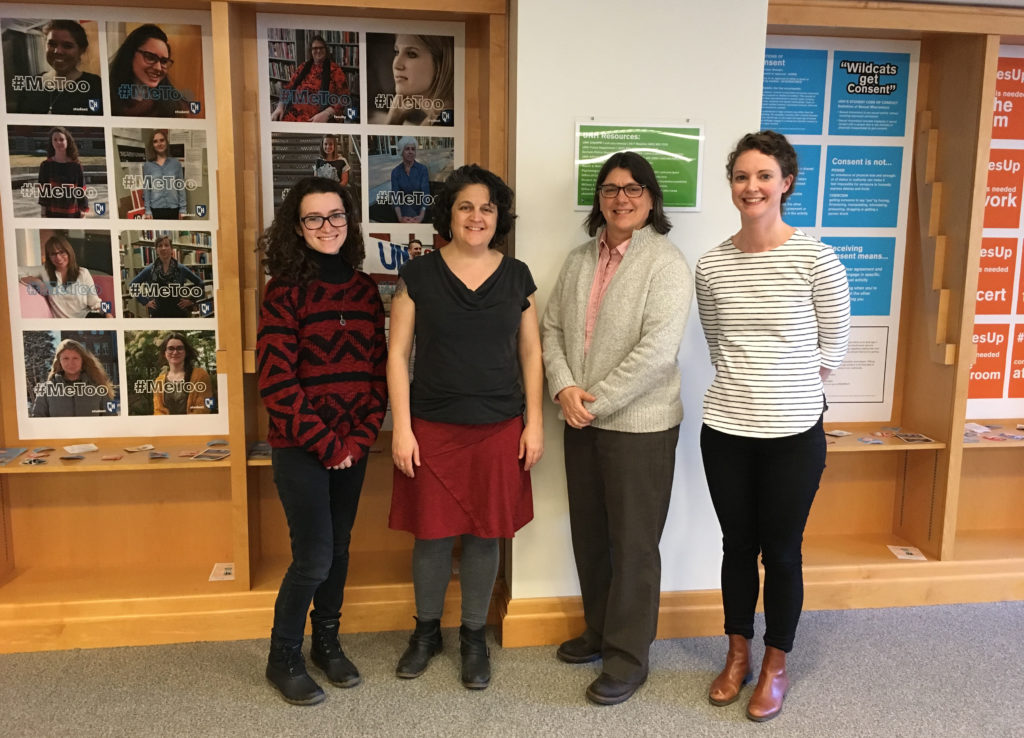
This year our exhibit for International Anti-Street Harassment week was in a new location at our campus library (since we were not allowed back to the more visible campus spot). One year later we are proud of the work we’ve been able to do and we look forward to continuing the conversation and bringing in new campus members as allies to help in the fight to end street harassment and all forms of sexual violence.
Connie is the Marketing Communications Specialist for the Sexual Harassment & Rape Prevention Program (SHARPP) at the University of New Hampshire. She can be reached at connie.disanto@unh.edu.

